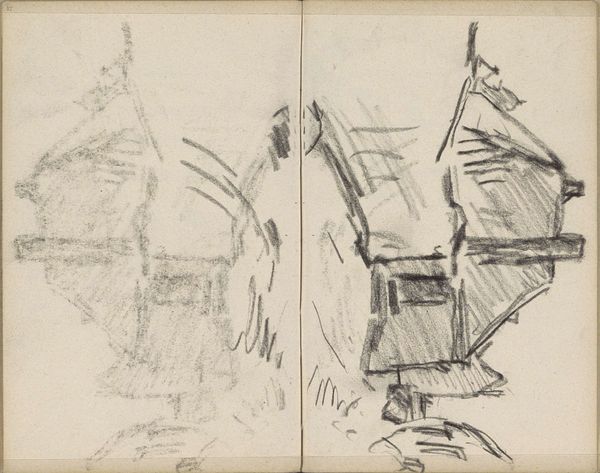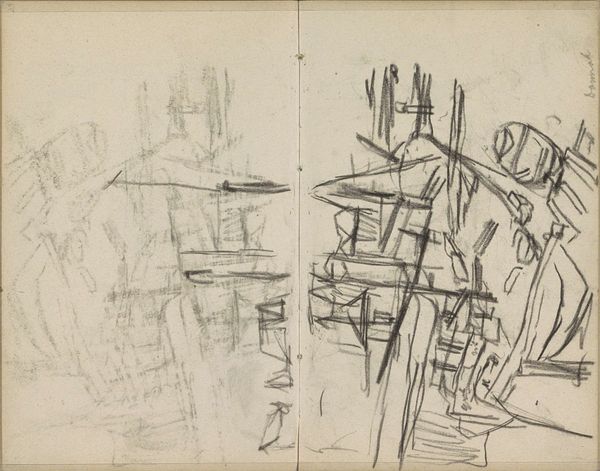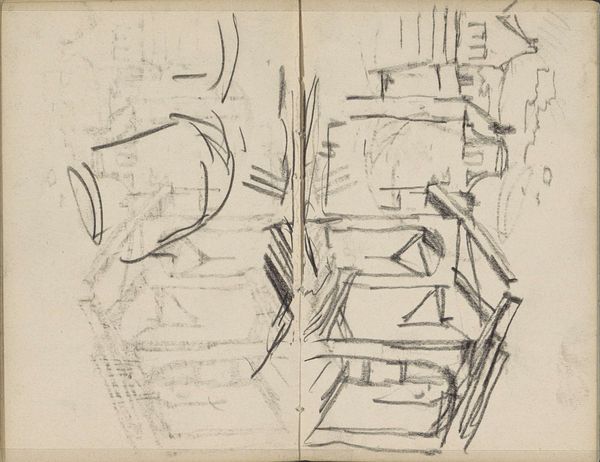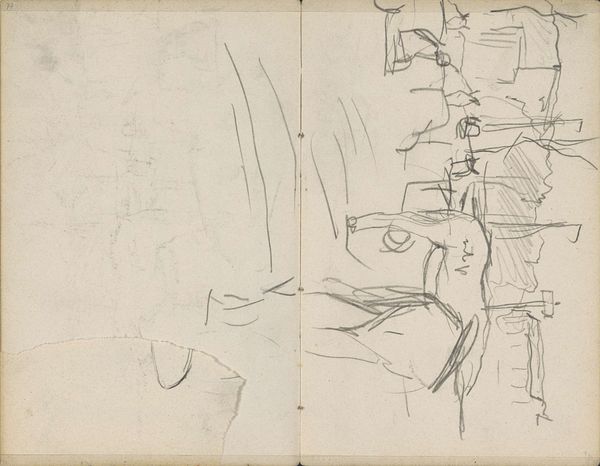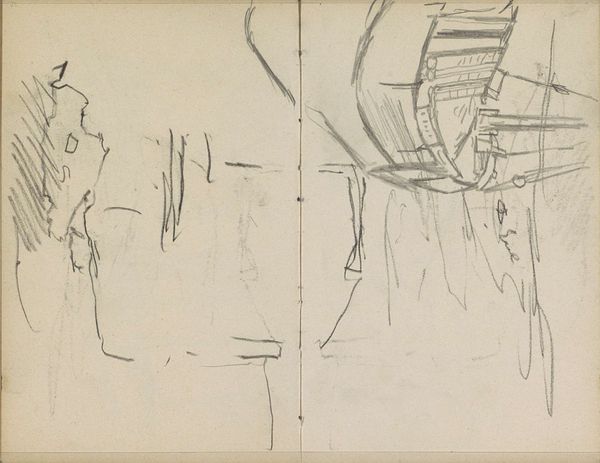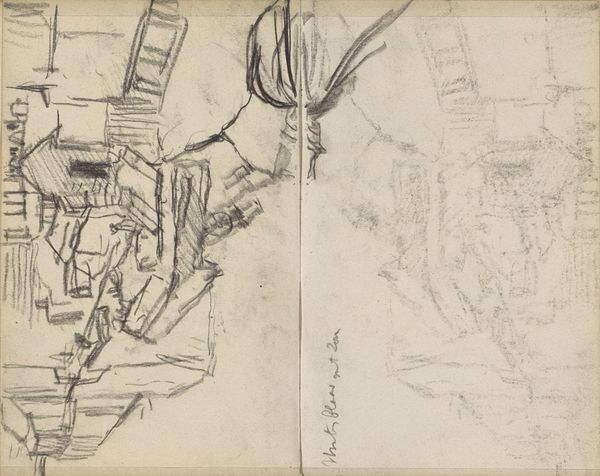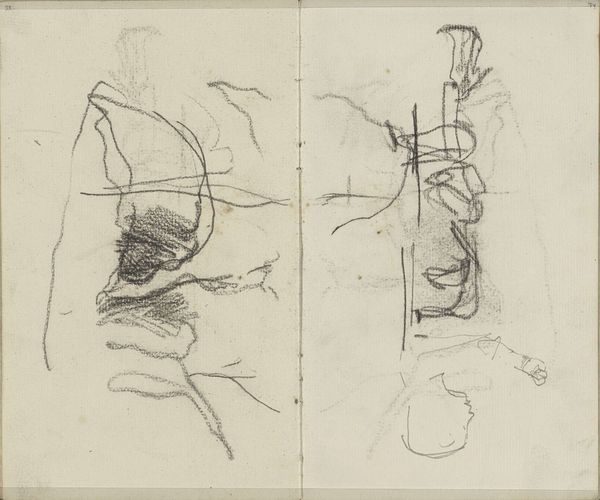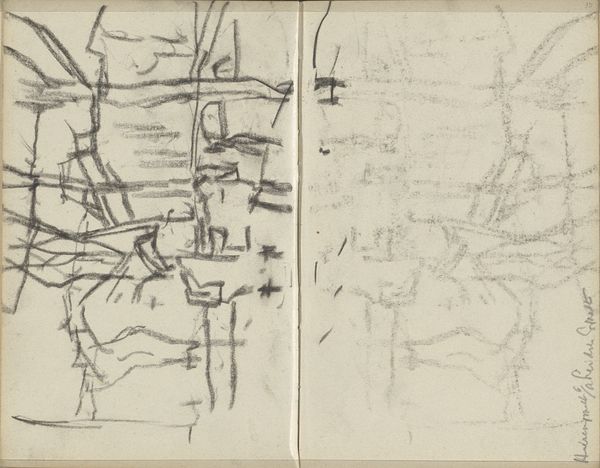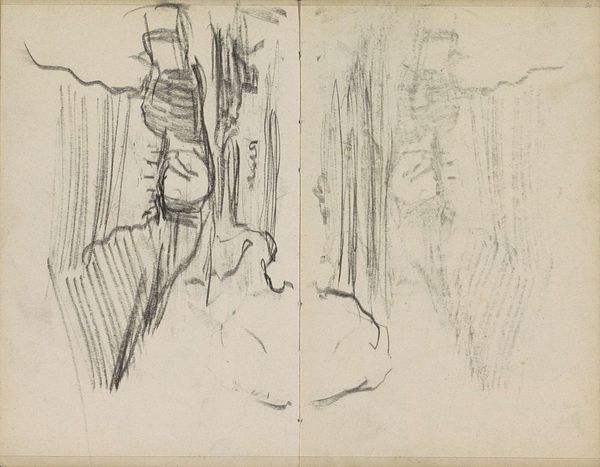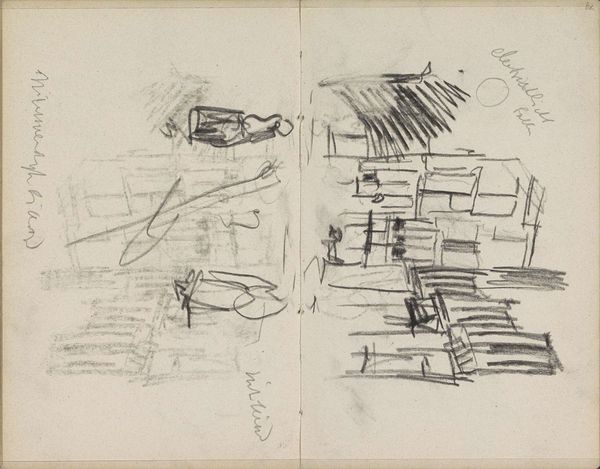
Copyright: Rijks Museum: Open Domain
Curator: This is George Hendrik Breitner’s "Gezicht op een straat, mogelijk in Haarlem," a drawing from around 1902. It's part of the Rijksmuseum's collection. Editor: It's a quick sketch, almost like a fleeting impression. The buildings are suggested more than defined. What story do you think those rough lines are trying to tell? Curator: Think of sketches as the visual language of thought. Breitner’s symbols here—those rapidly drawn lines and shadowy areas—are less about photographic accuracy, and more about capturing the feeling of urban life. Doesn't it evoke a sense of bustling energy? The unfinished quality almost becomes the message itself. Do you see anything familiar here from Breitner's other work? Editor: Now that you mention it, there's a similar grittiness to his paintings of Amsterdam. But in this sketch, it's raw, unfiltered. Curator: Exactly. And that rawness holds power. The cultural memory of Haarlem—a city steeped in history, but modernizing—is captured not in meticulous detail, but in the feeling of being there, witnessing it change. Does this sketchbook quality change the way we interpret it? Editor: It does. Seeing it as a personal sketch gives it more immediacy. It feels like we're seeing Haarlem through Breitner’s eyes, his initial, almost unconscious reaction to the scene. It also makes me wonder what elements stood out the most to him to note down, like personal shorthand. Curator: Precisely. He’s using symbols to map out not just the physical space, but also the psychological space of the city. It really provides insight to Breitner as a painter, doesn’t it? Editor: Definitely, seeing this sketch adds a new layer of understanding to his paintings.
Comments
No comments
Be the first to comment and join the conversation on the ultimate creative platform.

